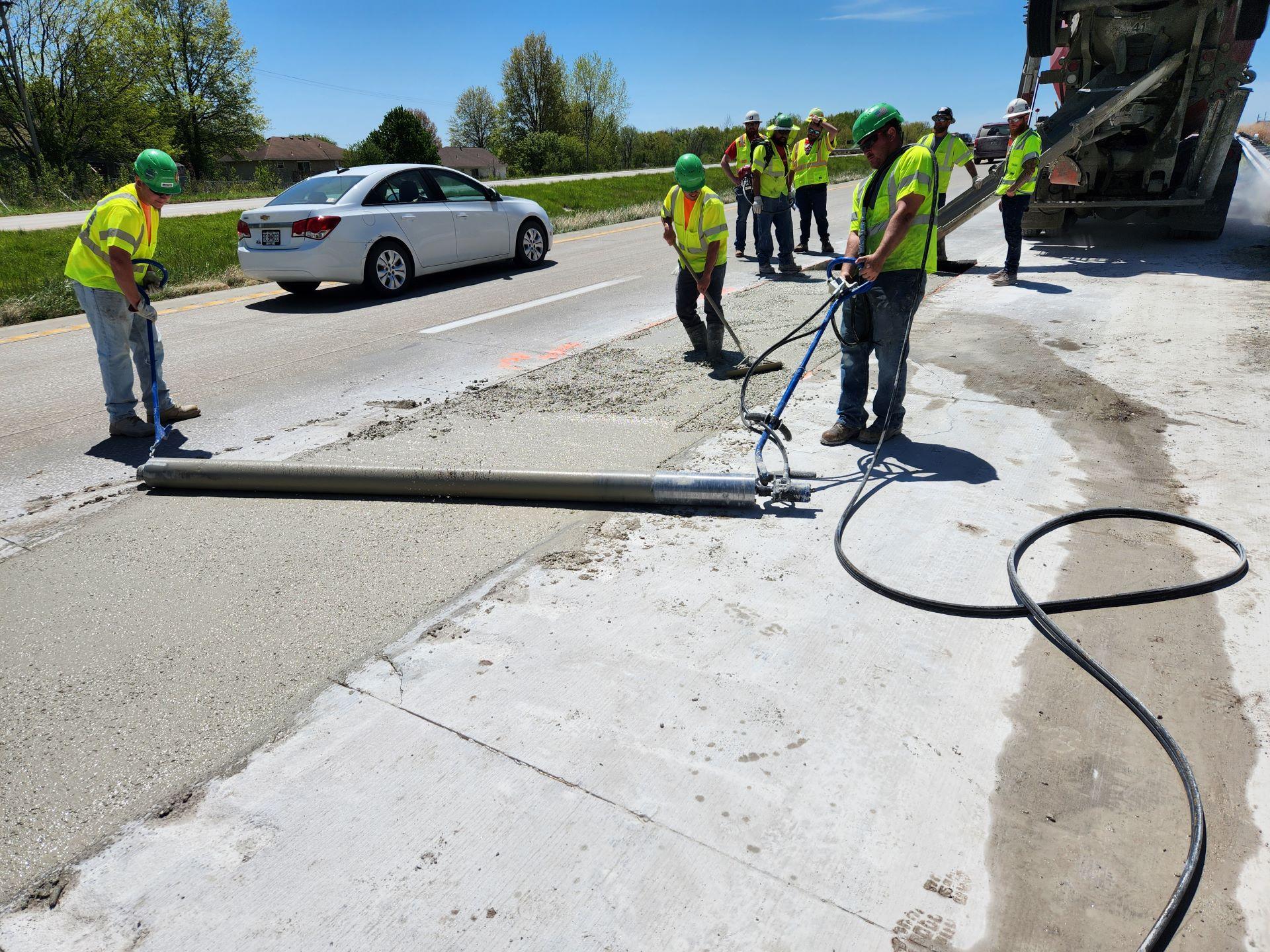
The Missouri I-35 pavement rehabilitation project proved that Rapid Set® Cement can be successfully produced and placed using a conventional ready mix plant—dispelling the common concern that the material sets too quickly for drum truck delivery.
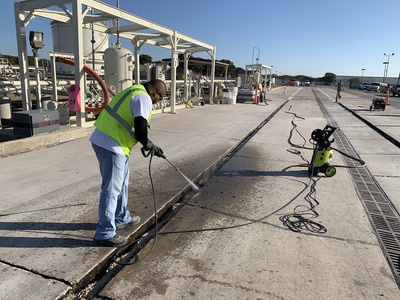
The U.S. military has used Rapid Set® calcium sulfoaluminate (CSA) cement-based products to quickly rebuild runways and other damaged infrastructure for almost two decades. This Concrete Mix project demonstrates the material’s speed and strength benefits in one of many airfield pavement repair applications.
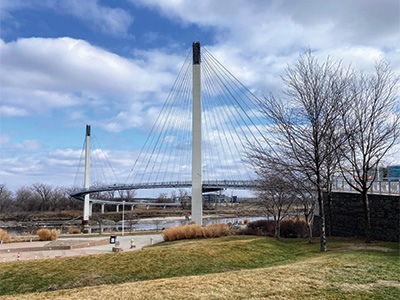
More stringent performance requirements combined with changes in type, quality, and availability of concreting materials is inspiring innovation, creativity, and collaboration. It is also renewing interest in materials with established, proven performance that offer solutions to today’s challenges. One of those experiencing an inspiring renaissance is Type K cement.
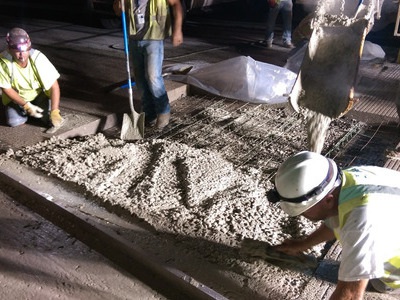
Even at 8 inches, asphalt is no match for planes that weigh 50 to 85 tons. West Virginia pavement engineers and Triton Construction replaced deteriorating overlay with 8 tons of Rapid Set® Cement concrete that, at 5000 psi compressive strength in one hour, exceeded project requirements.
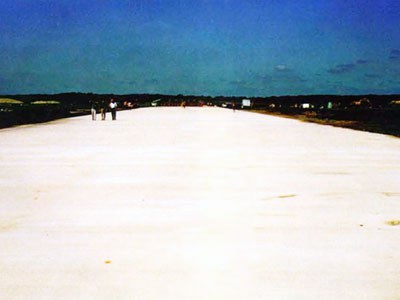
19 years after placement of three demonstration pavements, the post-tensioned design shows best performance. The post-tensioned pavement made with fibrous shrinkage compensating concrete using Type K cement is 75 feet wide, 1,200 feet long, and has no joints cut into it.
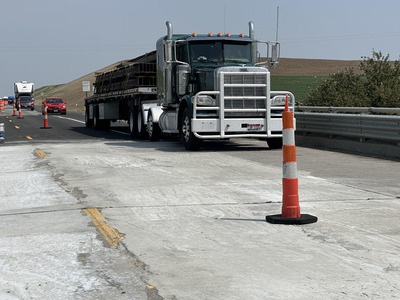
The tire studs and chains that are popular with Pacific Northwest drivers carve troughs into concrete. A regional contractor and Washington State pavement engineers are watching how fast-setting, ultra high-strength Rapid Set® UHPC Mortar stands up to traffic.
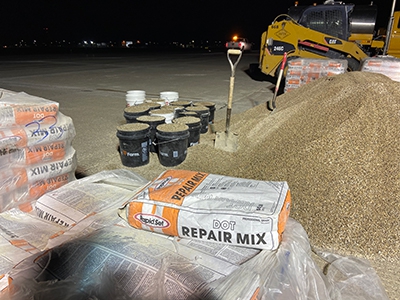
Appleton International Airport's two runways intersect instead of running parallel to each other, so pavement repairs require closing both at the same time -- not ideal for keeping traffic moving. As a result, fines for not reopening a nighttime repair are hefty. An award-winning Wisconsin contractor used Rapid Set® DOT Repair Mix to make sure overnight partial-depth surface and joint repairs were for traffic by 6 am.
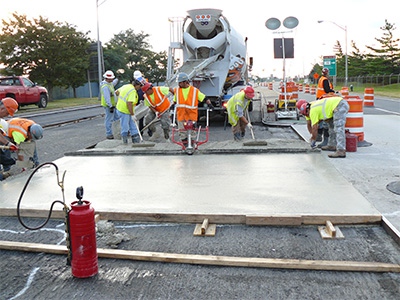
The asphalt intersections at John F. Kennedy International Airport’s cargo terminal were severely rutted by truck traffic. To repair the damaged pavement and prevent future rutting, Perfetto Contracting installed 4-inch-thick bonded whitetopping made of Rapid Set® DOT Cement concrete.
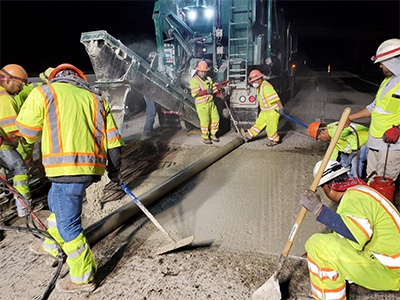
Broken continuous reinforced concrete pavement (CRCP) panels were replaced using Rapid Set Cement and local aggregates. The repaired pavement reached a flexural strength of 400 psi in four hours and reopened to traffic by 6:30 am each day.
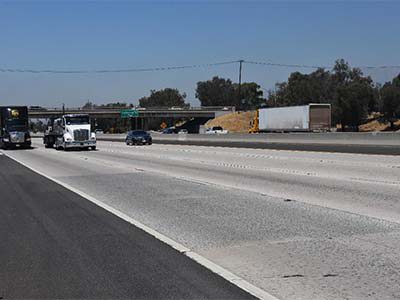
Rapid Strength Concrete (RSC) slabs on six California jointed plain concrete pavement (JPCP) highway projects were surveyed. The overall performance of the RSC slabs were similar and considered to be outstanding over 13 years.

Rapid Strength Concrete (RSC) slabs on six California jointed plain concrete pavement (JPCP) highway projects were surveyed. The overall performance of the RSC slabs were similar and considered to be outstanding over 13 years.
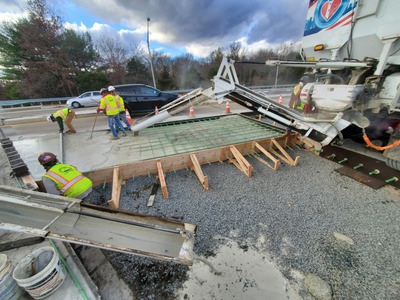
Work was performed in temperatures from 18° to 49° degrees Fahrenheit. Rapid Set® DOT Cement’s high early strengths allowed the concrete to be exposed to freezing temperatures that portland cement concrete typically can’t handle.
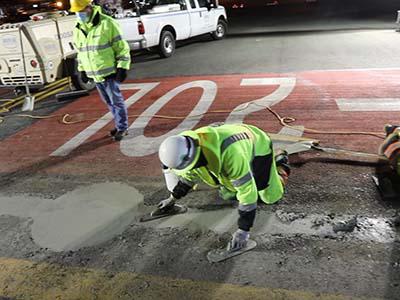
A major California airport installed can lighting to improve visibility. The contractor used ASTM C1600 very-rapid-hardening (VRH) Rapid Set Cement concrete instead of Type III portland cement concrete to avoid heavy penalties that would have accrued had taxiways not reopened to traffic by 5:30 a.m. every day.
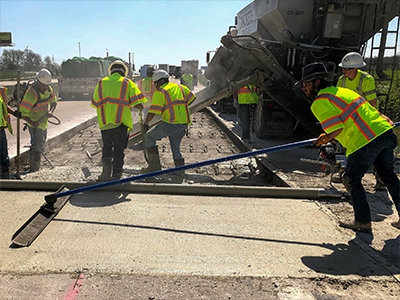
The I-64/40 pavement patching project consisted of replacing 7,500 square yards of 11-inch-thick concrete panels. Work was completed ahead of schedule using Rapid Set Cement.
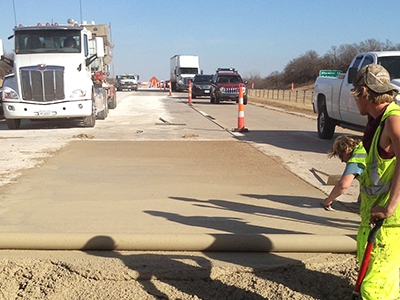
To ensure all timelines and incentives could be met, Rapid Set Cement and DOT Repair Mix Concentrate (aka DOT Concentrate) were used for all patching and doweling work. Work included full-depth panel replacements and slot stitching at longitudinal cracks and joints and DBR at transverse cracks and joints using DOT Concentrate.
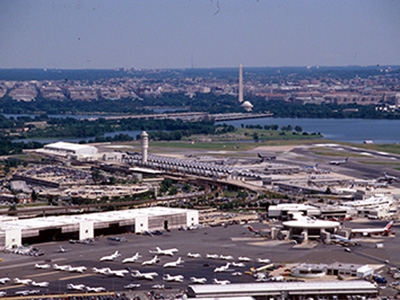
Contract penalties for construction delays on runway repairs can be extremely punitive. To give crews enough time to cut out and replace old light cans and sample and test newly placed concrete each night before the runway was approved for reopening, contractor DACO Construction used Rapid Set Cement concrete instead of accelerated Type III portland cement concrete.
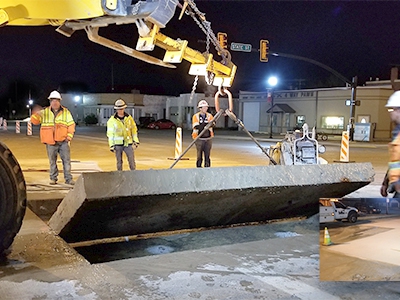
Mining has driven Utah's growth since before the territory became a state in 1896. Maintaining 24/7/365 access to these facilities is therefore critical to the state's economy. To keep traffic moving when the north-south route through one mining town required repair, the state chose to use ASTM C1600 very-rapid-hardening Rapid Set® Cement.
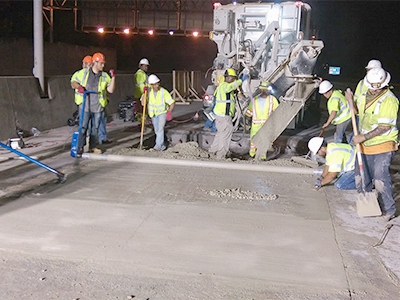
The North Carolina Department of Transportation (NCDOT) has used concrete mix designs containing Rapid Set Cement since 2014 to meet performance specifications for their roadway panel replacement projects. Here, the contractor was able to meet the required reopening strength before 6:30 am every day in every season.
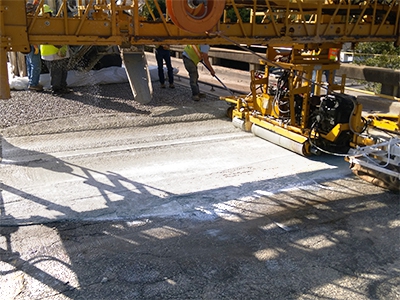
Because the roadway had to be returned to traffic by a specified time with a minimum compressive strength of 1600 psi, Rapid Set® Cement’s fast curing time was the ideal solution. The contractor was able to replace more broken pavement panels each weekend.
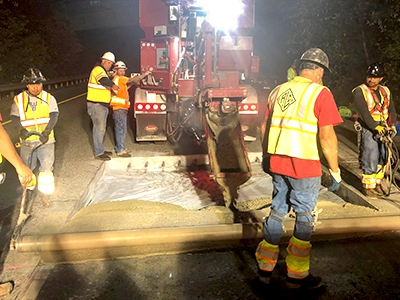
When the highway has to be repaired and reopened by 6 a.m. and the pavement has to have 3000 psi compressive strength to reopen, the Washington State DOT (WSDOT) often specifies Rapid Set Cement. Contractors working for the agency placed 200 tons over three months to restore a smooth ride for commuters.
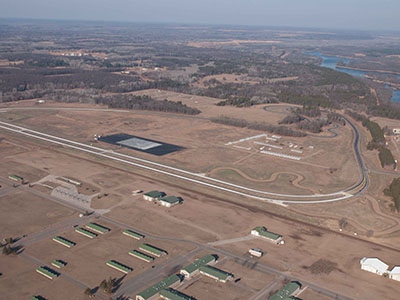
Engineering firms URS and Stantec received an Honor Award for their innovative way of designing pavement with minimal joints, no curling, no cracking, and no spalling. Komponent shrinkage-compensating concrete was used for the skid pad.
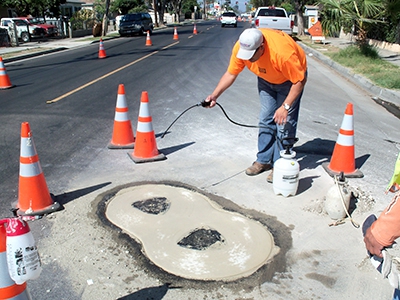
After removing the concrete around the manholes, the collars were reset to the correct elevations using Concrete Mix. SET Control was used when temperatures rose. With no delays, crews met the construction schedule.
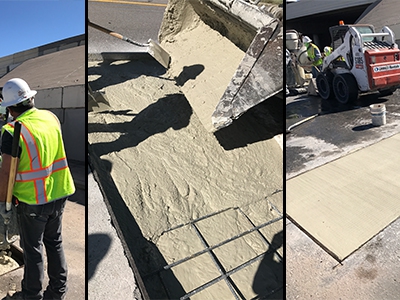
El Paso, Texas, in summer is hot. Here’s how Synergy Construction’s crews extended the working time of Rapid Set® as they repaired and/or replaced reinforced concrete panels on almost 200 miles of road in temperatures up to 109 degrees Fahrenheit.
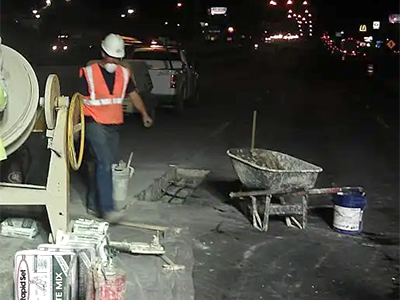
Approximately 7 to 8 miles of freeway needed potholes repaired. Concrete Mix was chosen for its high early strength so repairs could be made overnight. The lanes were successfully open for traffic each morning.
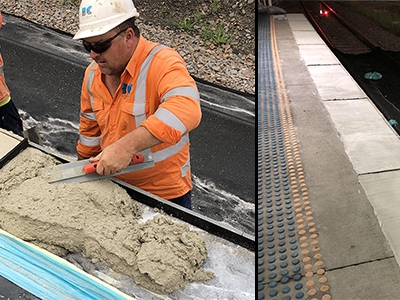
Copings at train station were repaired to provide a safe surface for embarking/disembarking passengers. Work was performed during hot weather with temperatures reaching 95 degrees Fahrenheit. Cement All and SET Control were used.
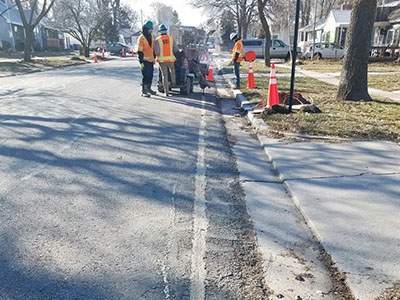
Salt Lake City’s micro-trenching work occurred when Utah was still experiencing winter weather. Flowable Fill flowed well into the trench’s small space and set up quickly despite the cold weather, achieving the specified requirement of 500 psi in 28 days, with half the maximum strength at opening, which was a few hours.
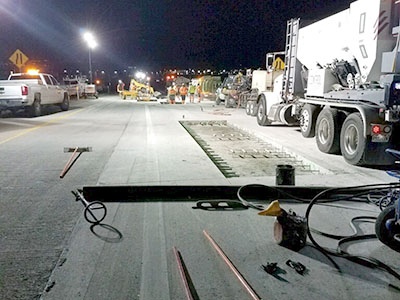
The Utah DOT uses bulk Rapid Set Cement on time-sensitive projects to minimize inconvenience to the driving public. Contractor Dry Creek Structures consistently met the 6 am reopening deadline and 4000 psi (compressive) reopening strength. Demolition, installation, and curing of the newly placed concrete was completed in time for the morning commute.
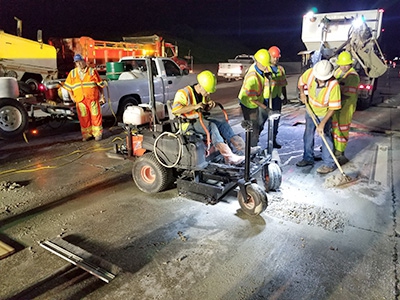
Portions of two busy interstates had to patched overnight and reopened to traffic by 5 am. Using Rapid Set Cement, contractor RA Knapp Construction was able to get 2.3 times the production in the same eight-hour time frame. The Kansas DOT has added Rapid Set to its patching specifications.
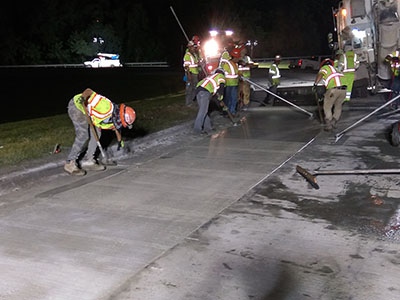
The NCDOT oversaw the full-depth panel replacement on the southern stretch of Interstate-40 in Raleigh, North Carolina. Rapid Set cement concrete was used and met the specifications of 400-psi flexural strength in two hours, in half the time.
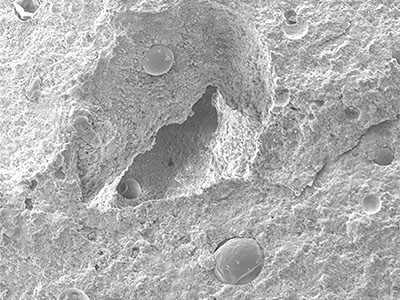
Unlike the chemically stabilized air bubble of traditional methods, Low-P MSA's air voids are made up of tiny, flexible hollow polymer spheres that act as microscopic forms in the cement matrix. They are rigid enough to form voids in the hardened concrete, yet soft enough to compress and allow space for expanding water to provide the desired freeze/thaw protection.
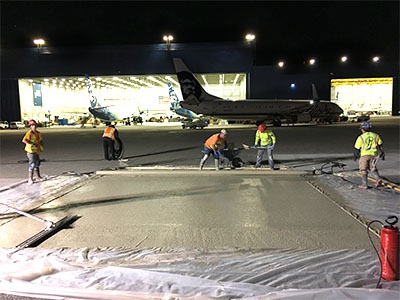
Rapid Set Cement is the Port of Seattle’s material of choice because it provides high initial strengths and a faster return to service with long-term durability. Rapid Set Cement concrete is used to perform the work overnight and the repaired sections returned to service each morning so that operations and flight schedules are not disrupted.
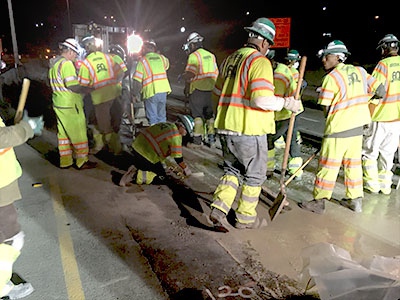
Work was able to be performed overnight and lanes reopened to traffic by morning. 12,000 spall repairs and dowel bar retrofits were completed using DOT Repair Mix.
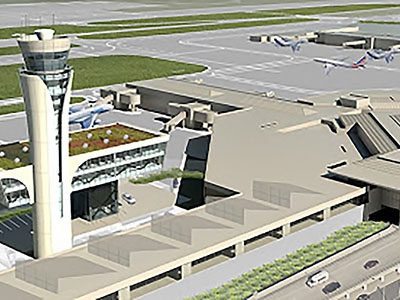
Project specifications for filling the trenches and holes in the upgrade of the runway lighting called for concrete to achieve compressive strength of 3,500 psi in four hours. Rapid Set Cement was used in the mix design and reached 3,500 psi in two hours, half the time specified, allowing the project to be completed sooner.
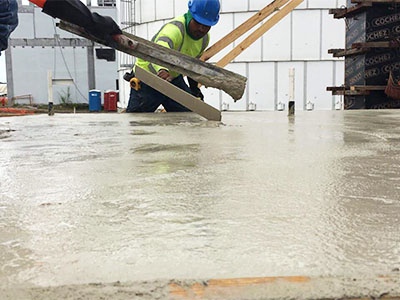
Concrete Mix was used to level the seven concrete pads inside this airport's electrical and mechanical rooms. SET Control was used to extend the working time due to the hot temperature setting time and FLOW Control was used to enhance the flow consistency.
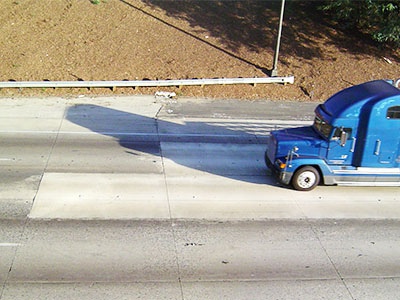
300 cubic yards of concrete were successful placed in 6 hours. The freeway opened to traffic an hour after placement. Short Load produced the Rapid Set Concrete.
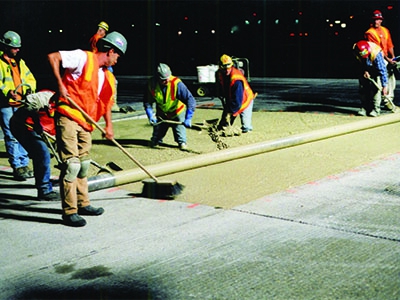
Based on the proven performance of Rapid Set® Cement Concrete in heavy-use pavement applications and harsh climates, it was chosen to replace 531 Runway 16C panels. Rapid Set Cement Concrete provided a rapid-setting, high performance concrete solution engineered to provide extended service life and significant savings in repair and replacement costs at SEA-TAC for many years to come.
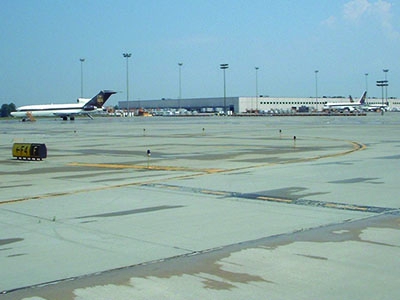
After 14 years of service, steel-fiber reinforced, post-tensioned, shrinkage-compensating concrete proves a cost-effective paving material for a joint-free airport taxiway. Product used was Type K shrinkage-compensating cement.
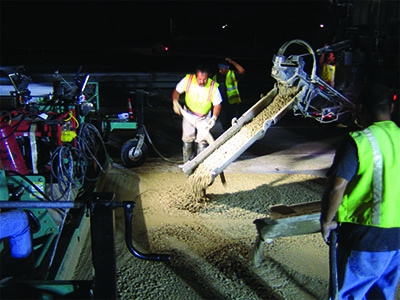
Volumetric Mixer produces 398 cubic yards of rapid strength concrete in just 5 hours, for panel replacement work on one of California's busiest freeways. Product used was Rapid Set Cement.
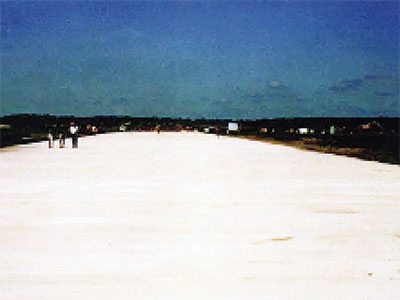
Eliminating joints in runways and taxiways has long been an objective of the Federal Aviation Administration (FAA). Joints are usually the locus of spalling, which not only causes bumpy rides but also creates a hazardous situation: Loose concrete fragments can get sucked into jet engine intakes. In its desire to overcome these challenges, the FAA installed one of the most unusual concrete slabs in the world at an Illinois airport. The post-tensioned pavement made with Type K shrinkage-compensating cement with steel fibers is 75 feet wide and 1,200 feet long -- with no joints cut into it.